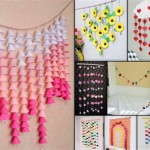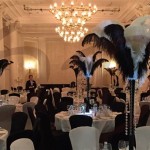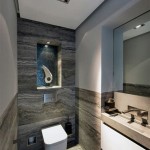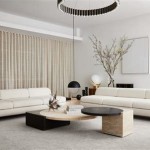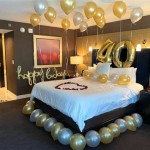Can You Use Gold And Silver Decor Together For Wedding?
The orchestration of wedding decor involves myriad decisions, each contributing to the overall aesthetic and atmosphere of the event. Among the most impactful choices are the metallic accents that will adorn the venue. Traditionally, couples leaned towards selecting either gold or silver as the dominant metal, maintaining a sense of stylistic uniformity. However, contemporary trends embrace a more eclectic approach, questioning the conventional wisdom and prompting a closer examination of whether gold and silver decor can coexist harmoniously within a wedding setting.
The compatibility of gold and silver stems from the interplay of various design principles, encompassing color theory, texture, and the specific context of the wedding's theme. Success in combining these metals necessitates a deliberate and nuanced approach, going beyond simply intermixing elements and instead focusing on achieving a balanced and cohesive visual narrative. This involves understanding the inherent qualities of each metal, their potential for contrasting or complementing each other, and their impact on the overall ambiance of the celebration.
Understanding the Allure of Gold and Silver in Wedding Decor
Gold, in wedding decor, is often associated with opulence, warmth, and timeless elegance. Its inherent luster catches and reflects light, creating a sense of grandeur and celebration. Gold finishes are available in various shades, ranging from the bright, almost brassy tones to more muted, antique variants. This versatility allows gold to be incorporated into a wide range of wedding themes, from classic and traditional to bohemian and rustic. The warm undertones of gold tend to complement richer color palettes, adding depth and dimension to the overall design scheme. Gold can also evoke feelings of nostalgia and romance, making it a popular choice for couples seeking a sophisticated and timeless aesthetic.
Silver, conversely, projects an image of sleek modernity, sophistication, and understated glamour. Its cool, reflective surface offers a crisp and clean aesthetic, making it a versatile choice for contemporary and minimalist wedding styles. Similar to gold, silver comes in a variety of finishes, from polished and gleaming to brushed and matte. These different textures can be used to create visual interest and depth within the décor. Silver is particularly effective in complementing cooler color palettes, enhancing the vibrancy of blues, greens, and purples. Its association with lunar imagery also lends it a touch of ethereal beauty, making it a suitable option for couples seeking a refined and contemporary ambiance.
The historical context of using gold and silver in celebratory events further illuminates their appeal. Gold has historically been associated with royalty, wealth, and prosperity, while silver has been valued for its purity and practical applications. In wedding ceremonies, these metals can symbolize the couple's hopes for a prosperous and enduring union.
Achieving Harmony: Key Principles for Mixing Gold and Silver
Effectively integrating gold and silver requires adherence to certain design principles that facilitate a balanced and visually appealing aesthetic. The key lies in understanding how to create contrast and cohesion simultaneously, ensuring that the two metals work together to enhance, rather than detract from, the overall wedding design.
One critical aspect is maintaining a balance in the proportion of each metal. It is generally advisable to designate one metal as the dominant element and the other as an accent. For instance, if gold is chosen as the primary metal, it can be incorporated into larger elements such as centerpieces, charger plates, or table runners. Silver can then be used in smaller details like candle holders, cutlery, or decorative accents. This approach prevents either metal from overwhelming the other, allowing for a harmonious coexistence.
Another important consideration is the consistent application of a specific finish for each metal. Employing a mix of polished and brushed gold alongside polished and brushed silver can lead to a disjointed aesthetic. Opting for a uniform finish, such as brushed gold paired with brushed silver, or polished gold with polished silver, creates a sense of cohesion and continuity. This consistency streamlines the visual experience, preventing the decor from appearing haphazard or unintentionally mismatched.
The interplay of textures is also critical. Incorporating varying textures, such as matte gold with mirrored silver, can introduce depth and visual interest. This technique adds dimension to the décor and prevents the metallic elements from appearing flat or monotonous. Utilizing textured fabrics, such as sequined tablecloths or metallic-threaded ribbons, can further enhance the overall aesthetic appeal.
The selection of complementary colors plays a pivotal role in uniting gold and silver. Neutral tones, such as ivory, gray, and blush pink, serve as an excellent backdrop for these metals, allowing them to shine without clashing with other elements. Incorporating natural greenery, such as eucalyptus or olive branches, can also soften the overall look and create a more organic and inviting atmosphere. Avoiding overly vibrant or contrasting colors can help maintain a sense of balance and harmony within the décor.
Lighting significantly impacts the appearance of metallic elements. Warm lighting, such as candlelight or soft spotlights, can enhance the richness of gold, while cool lighting can accentuate the crispness of silver. Carefully considering the lighting scheme and its effect on the metallic accents is essential for creating the desired mood and ambiance.
Practical Applications: Examples of Gold and Silver Done Right
The successful integration of gold and silver in wedding decor is best illustrated through practical examples that showcase these principles in action. These examples provide tangible inspiration for couples seeking to incorporate both metals into their special day.
Consider a tablescape where gold charger plates are paired with silver cutlery and crystal glassware. The gold charger plates provide a warm and luxurious foundation, while the silver cutlery adds a touch of modern sophistication. The crystal glassware reflects light, enhancing the overall sparkle and elegance of the setting. White linens and neutral-toned centerpieces provide a clean and understated backdrop, allowing the metallic elements to take center stage. Small gold accents, such as place card holders or napkin rings, can be incorporated to further tie the look together.
Another example involves the use of a gold-framed mirror as a seating chart display, complemented by silver calligraphy and detailing. The gold frame adds a touch of vintage charm, while the silver calligraphy provides a modern and elegant contrast. This combination creates a visually striking focal point that is both functional and aesthetically pleasing. Similar principles can be applied to welcome signs, photo displays, and other decorative elements.
In floral arrangements, gold vases can be paired with silver accents in the form of ribbons or metallic foliage. The gold vases provide a warm and inviting base, while the silver accents add a touch of shimmer and sophistication. Selecting flowers in complementary colors, such as blush pink, ivory, and soft green, can further enhance the overall aesthetic appeal. The use of greenery, such as eucalyptus or ferns, can soften the metallic elements and create a more natural and organic look.
For wedding favors, gold boxes or bags can be tied with silver ribbons, or vice versa. This simple yet effective detail adds a touch of elegance and sophistication to the overall presentation. Personalizing the favors with custom tags or labels in complementary colors can further enhance their appeal. This small gesture demonstrates attention to detail and adds a memorable touch to the celebration.
Even in the attire of the wedding party, subtle metallic accents can be incorporated. Bridesmaids can wear dresses with delicate silver or gold embellishments, while groomsmen can sport cufflinks or tie clips in coordinating metals. These subtle details add a touch of glamour and sophistication without being overly distracting. Ensuring that the metallic accents complement the overall color palette and style of the wedding is essential for creating a cohesive and visually appealing look.
These practical examples demonstrate that mixing gold and silver in wedding decor is not only possible but can also be incredibly effective when executed with careful planning and attention to detail. By adhering to the principles of balance, consistency, and complementary colors, couples can create a wedding that is both elegant and memorable.

A Vintage Silver And Gold Wedding Inspiration Decorations

Gold And Silver Wedding Theme Arabia Weddings

Silver Wedding Decor Ideas Sparkle Your With These Tips

Silver Wedding Decor Ideas Sparkle Your With These Tips

Loverly Love Silver And Gold Mix In These Colors For Swoon Worthy I Dos

Rose Gold Silver And White Wedding Decor

Silver Wedding Decor Ideas Sparkle Your With These Tips

Gold Silver Glitter Wedding Decorations New Collection

Wedding Ideas By Color Gold And Silver Theme Colors Inspiration

Silver Wedding Decor Ideas Sparkle Your With These Tips

